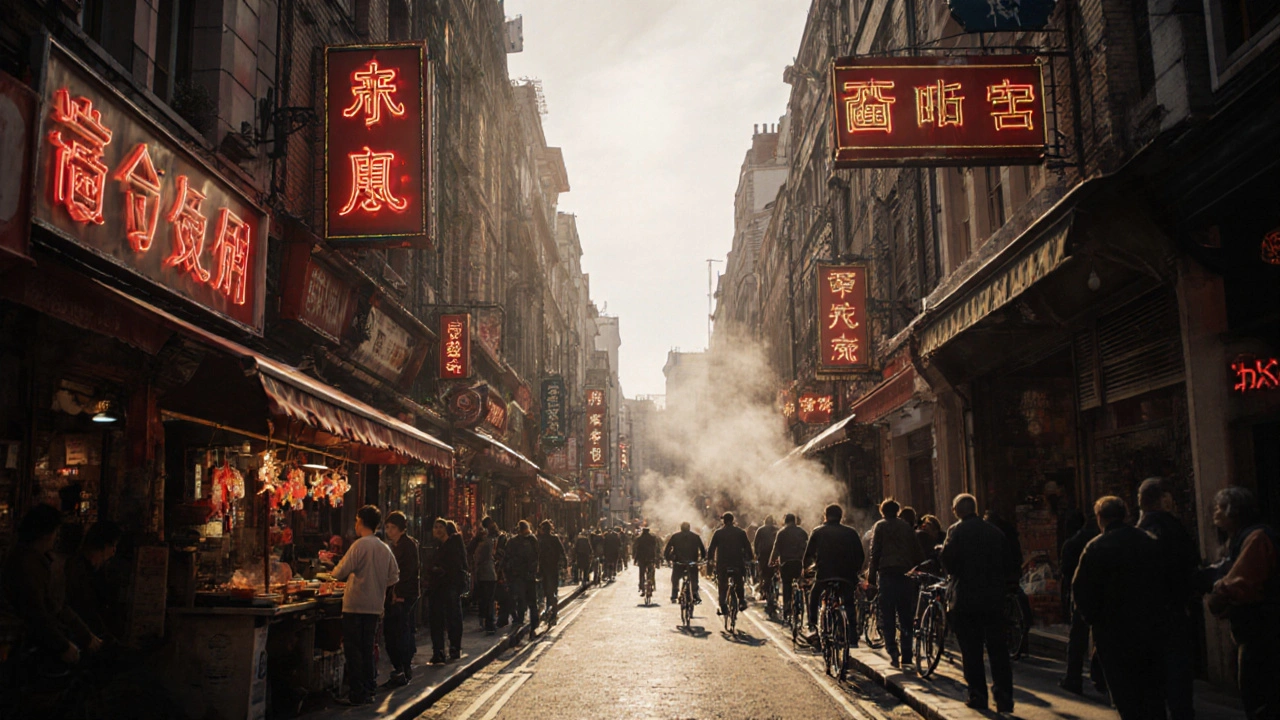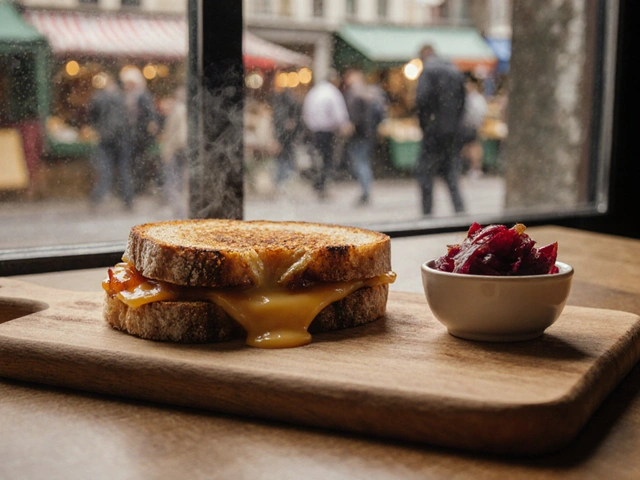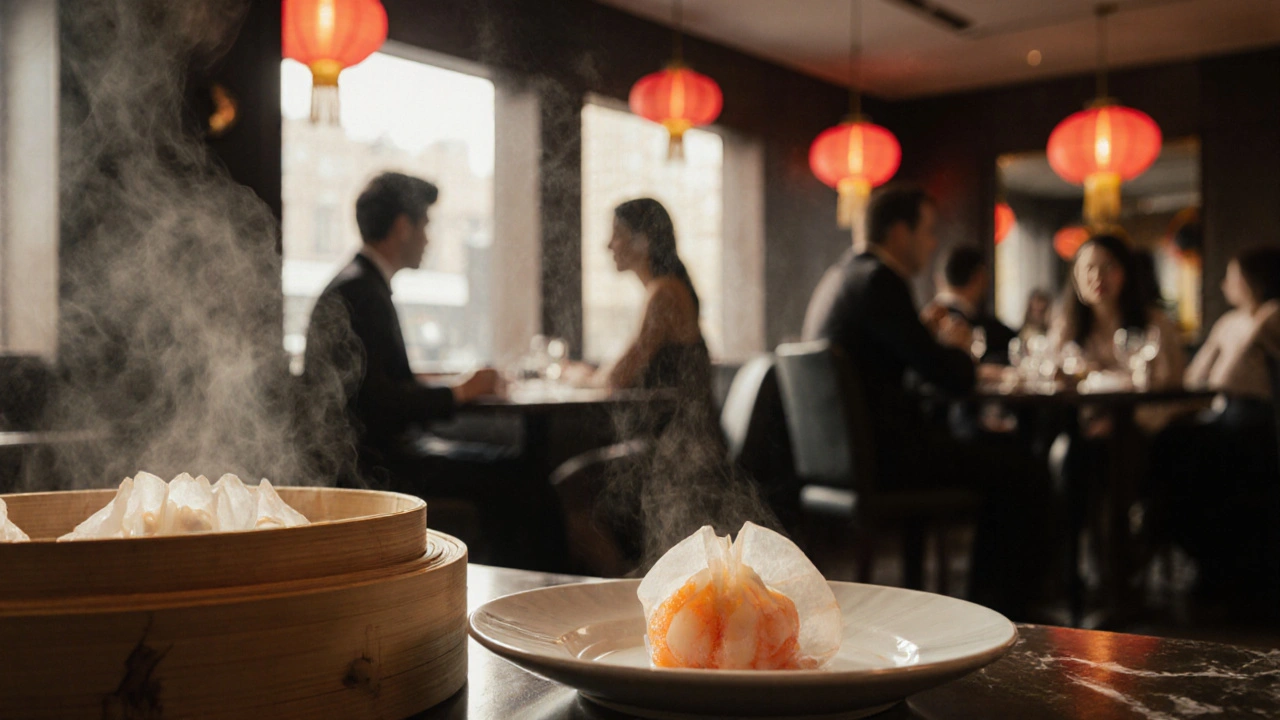
You’ve walked past the red lanterns in Soho, smelled the sizzle of woks from a side street, and maybe even tried that greasy takeaway dumpling after a night out. But if you’re looking for the best Chinese food in London, you’re not just chasing a meal-you’re chasing a real experience. This isn’t about generic sweet and sour pork or lukewarm chow mein. This is about hand-pulled noodles, crispy Peking duck that cracks like caramel, and dim sum so fresh it still steams on the plate.
What Makes Chinese Food in London Different?
London’s Chinese food scene isn’t one thing. It’s dozens of regional styles, each with its own rules, flavors, and traditions. You’ve got Cantonese dim sum from Guangdong, Sichuan numbing spice, Hunan heat, Shanghainese soup dumplings, and even northern wheat-based dishes that most tourists never find.
Back in the 80s and 90s, most Chinese restaurants in London stuck to Westernized versions of dishes-thick sauces, deep-fried everything, and menus that looked like they were written by someone who’d never been to China. Today? It’s completely different. Many restaurants are run by chefs who trained in Guangzhou, Chengdu, or Xi’an. They import dried shrimp, fermented black beans, and Sichuan peppercorns directly. You’re not eating British-Chinese food anymore. You’re eating real Chinese food, cooked the way it’s meant to be.
Why You Should Care About the Real Deal
Think of it this way: you wouldn’t go to Italy and order pizza with pineapple and call it authentic. So why settle for bland, overly sweet Chinese food in London? The difference isn’t just taste-it’s texture, balance, and technique.
Take stir-fried water spinach. In a real Cantonese kitchen, it’s cooked fast over high heat, just until the leaves wilt but still hold a crunch. The garlic is golden, not burnt. The soy sauce is light, not gloppy. That’s the kind of detail you notice once you’ve tasted it right.
And then there’s the communal side. In real Chinese restaurants, you order multiple dishes to share. It’s not about one big plate-it’s about variety, contrast, and conversation. That’s part of the culture. You don’t just eat. You experience.
Types of Chinese Food You’ll Find in London
London’s Chinese food scene is split into clear regional styles. Here’s what to look for:
- Cantonese: The most common. Think dim sum, roast meats (char siu, crispy duck), and steamed fish. Clean, fresh, not overly spicy.
- Sichuan: Bold, spicy, numbing. Mapo tofu, dan dan noodles, and hot pots with layers of chili oil. If you can handle the heat, this is where the real flavor lives.
- Shanghainese: Sweet, savory, and soupy. Soup dumplings (xiao long bao) are the star. You bite, you sip broth, you’re hooked.
- Beijing/Northern: Wheat-based. Hand-pulled noodles, Peking duck, and dumplings boiled or steamed. Hearty, filling, and often served with vinegar dip.
- Hunan: Even spicier than Sichuan. Dry-fried dishes, smoked meats, and fermented chili. Not for the faint of heart.
Most restaurants specialize in one or two styles. Don’t assume a place that does dim sum also does spicy Sichuan. Check the menu before you go.
Top 5 Chinese Restaurants in London You Need to Try
Here’s where to go if you want the real thing-not the tourist version.
1. Yauatcha (Soho)
Opened in 2004, Yauatcha set a new standard for dim sum in London. It’s not cheap, but it’s worth every pound. Their steamed shrimp dumplings are plump, translucent, and burst with sweet, juicy filling. The barbecue pork buns are soft, sticky, and glazed just right. They serve dim sum all day, and the tea selection is better than most Chinese teahouses in Guangzhou. Don’t skip the lotus seed paste tarts.
2. Hakkasan (Mayfair)
If you want luxury with a modern twist, Hakkasan is the place. It’s sleek, dark, and packed with celebrities, but the food doesn’t play around. Their crispy duck is roasted for 12 hours, then carved tableside. The black vinegar ribs? Sticky, tender, and balanced with a hint of star anise. The menu leans Cantonese with a touch of fusion-but the flavors stay true. Book ahead. You won’t walk in on a Friday night.
3. Sichuan House (Chinatown)
This is where locals go when they want their mouths to go numb. The mapo tofu here is legendary-ground pork, fermented black beans, and enough Sichuan peppercorns to make your lips tingle. Their dry-fried green beans are crispy on the outside, soft inside, and tossed with minced pork and chili. The spice level is adjustable, but trust me: go for ‘medium’ at least once. It’s not just hot-it’s alive.
4. Din Tai Fung (Covent Garden)
Yes, it’s a chain-but this branch is the real deal. It’s the first international location from Taiwan’s original Din Tai Fung, famous for their xiao long bao. The soup dumplings are made fresh every 45 minutes. You watch them being folded through a glass window. Each one has exactly 18 pleats. The broth inside is rich, pork-based, and hot enough to scald your tongue if you’re not careful. Eat them slow. Sip the broth first. Then dip in ginger-vinegar.
5. The China Garden (Wimbledon)
Don’t overlook the suburbs. This hidden gem in Wimbledon has been around since 1989 and still cooks the way it did back then. Their salt and pepper squid is crisp, lightly seasoned, and served with a chili-salt dip. The clay pot rice with Chinese sausage and mushrooms is caramelized at the bottom-crispy, smoky, and deeply satisfying. It’s not fancy, but it’s honest. And it’s always packed with families on weekends.
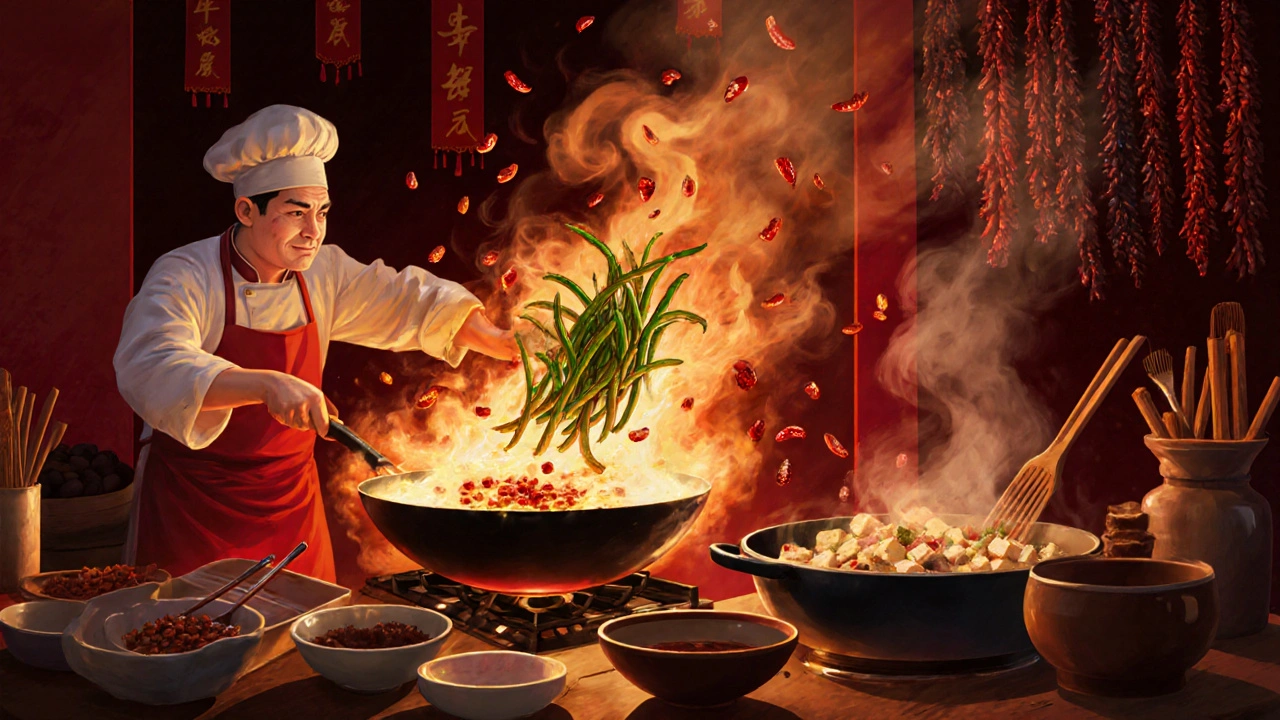
How to Find the Best Spot for You
Not all Chinese food is made equal. Here’s how to pick the right one:
- Look for Chinese-language menus. If the menu is only in English, it’s probably tailored for tourists. If you see Chinese characters, it’s a good sign.
- Check who’s eating there. If the place is full of Chinese families or groups of friends speaking Mandarin or Cantonese, you’re in the right spot.
- Avoid places with ‘Chinese Buffet’ in the name. Buffets mean mass production. Freshness is sacrificed.
- Ask for recommendations on Reddit or local Facebook groups. People in London’s Chinese communities know where the real food is.
Pro tip: Go on a weekday lunch. Many top restaurants offer cheaper dim sum sets during lunch hours. You get the same quality, less crowding, and better service.
What to Order (And What to Skip)
Here’s a quick cheat sheet:
- DO order: Dim sum (especially har gow, siu mai, char siu bao), Peking duck, xiao long bao, mapo tofu, dry-fried green beans, clay pot rice, dan dan noodles.
- SKIP: Sweet and sour pork, egg fried rice (unless it’s house-made and not gloopy), spring rolls (unless they’re freshly fried and not frozen), General Tso’s chicken (it doesn’t exist in China).
And if you see ‘chow mein’ on the menu? Ask if it’s stir-fried noodles or the crispy, fried kind. The stir-fried version is better-less greasy, more flavorful.
Price Range: What You’ll Pay
Chinese food in London doesn’t have to break the bank.
- Quick bite (dim sum or noodles): £8-£15 per person
- Mid-range restaurant (Sichuan or Cantonese): £20-£40 per person
- High-end (Hakkasan, Yauatcha): £50-£100 per person
For a full meal with 4-5 dishes and tea, £25-£35 is a fair price for a great experience. If you’re paying over £50 for a plate of sweet and sour chicken, you’re being charged for the view, not the food.
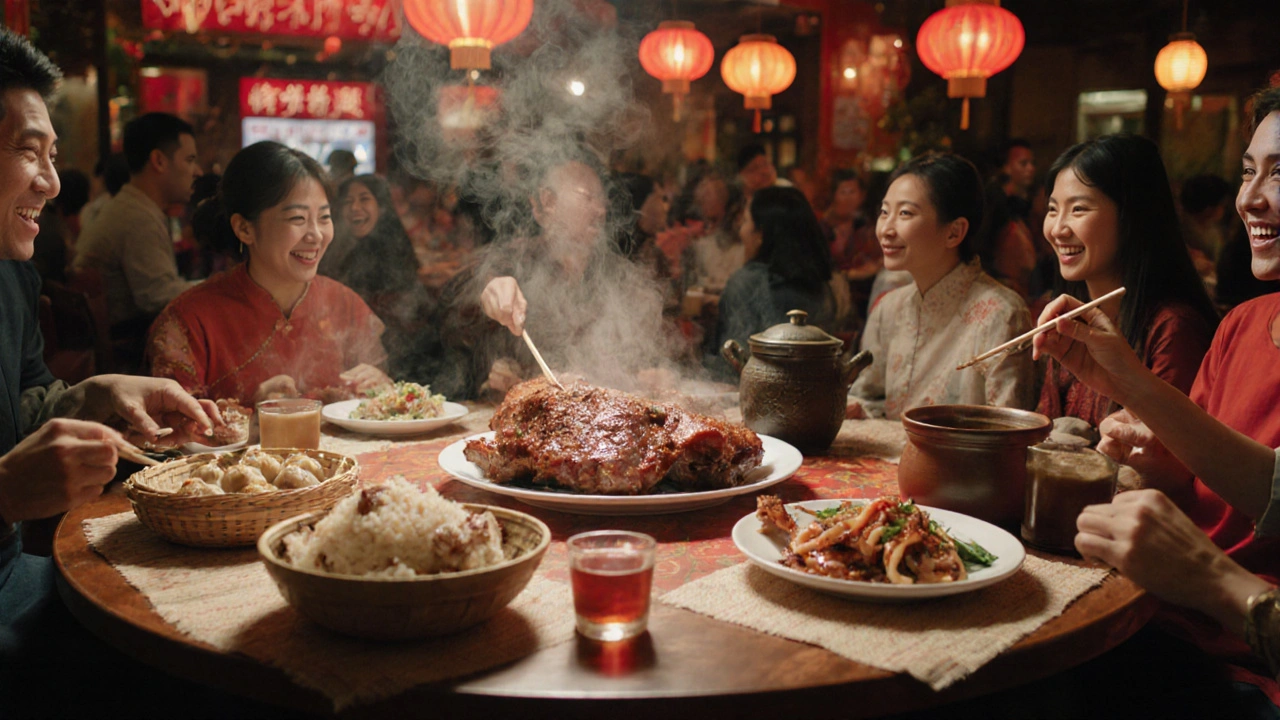
Comparison: Traditional vs. Modern Chinese Restaurants in London
| Feature | Traditional (e.g., The China Garden) | Modern (e.g., Hakkasan) |
|---|---|---|
| Ambiance | Simple, family-run, bustling | Minimalist, stylish, quiet |
| Menu Focus | Regional specialties, daily specials | Fusion, plated dishes, curated tasting menus |
| Authenticity | High-ingredients imported, recipes unchanged | Moderate-flavors adjusted for Western palates |
| Price per Person | £15-£30 | £50-£100 |
| Best For | Real taste, value, local vibe | Special occasions, Instagram, luxury |
Frequently Asked Questions
Is Chinatown the best place for Chinese food in London?
Chinatown has great options, but it’s also full of tourist traps. Some of the best Chinese food in London is outside Chinatown-like Sichuan House on Gerrard Street, or The China Garden in Wimbledon. Look beyond the red lanterns. The real gems are often tucked into side streets or in suburbs.
What’s the most authentic Chinese dish to try in London?
If you’ve never had xiao long bao (soup dumplings), start there. They’re hard to make well. The broth inside should be hot, rich, and not greasy. The skin should be thin enough to see through but strong enough to hold. Din Tai Fung and Yauatcha do them right. If you’re feeling bold, try Sichuan’s dry-fried beef with chili-spicy, chewy, and addictive.
Can I get vegetarian Chinese food in London?
Absolutely. Many Chinese restaurants have a separate vegetarian menu. Look for dishes like stir-fried tofu with black beans, Buddha’s delight (mixed vegetables in soy sauce), or steamed buns with mushrooms. Avoid dishes with oyster sauce or fish sauce unless they’re labeled vegan. Ask the staff-they’re usually happy to help.
Is it better to go for lunch or dinner?
Lunch is often the best time. Many top restaurants offer cheaper dim sum sets during lunch hours. You get the same quality, less crowding, and better service. Plus, you can try more dishes without spending a fortune. Dinner is great for a special night out, but lunch gives you more bang for your buck.
Do I need to book ahead?
For places like Hakkasan, Yauatcha, or Din Tai Fung-yes, especially on weekends. For smaller, local spots like Sichuan House or The China Garden, you can usually walk in. But if you’re going on a Friday or Saturday night, it’s safer to call ahead. Wait times can be 45 minutes or more.
Ready to Eat?
London’s Chinese food scene has come a long way. You don’t have to settle for greasy takeout or bland versions of dishes you’ve seen on TV. The best Chinese food in London is bold, complex, and deeply satisfying. Whether you’re craving spicy Sichuan, delicate dim sum, or steaming soup dumplings, there’s a place waiting for you. Just remember: follow the locals, skip the tourist traps, and don’t be afraid to ask for ‘spicy’ or ‘authentic.’ Your taste buds will thank you.
Comments (1)
- Éloïse Dallaire-Gauthier
- November 21, 2025 AT 10:41 AM
I went to Sichuan House last week and my lips are STILL tingling. Like, I had to drink three glasses of milk and still felt like my face was on fire in the best way. This isn't food - it's a full-body experience. I cried a little. Not from pain. From joy. That mapo tofu? It didn't just taste good - it rearranged my soul. If you're not willing to sweat for flavor, you're not ready for real Chinese food.

